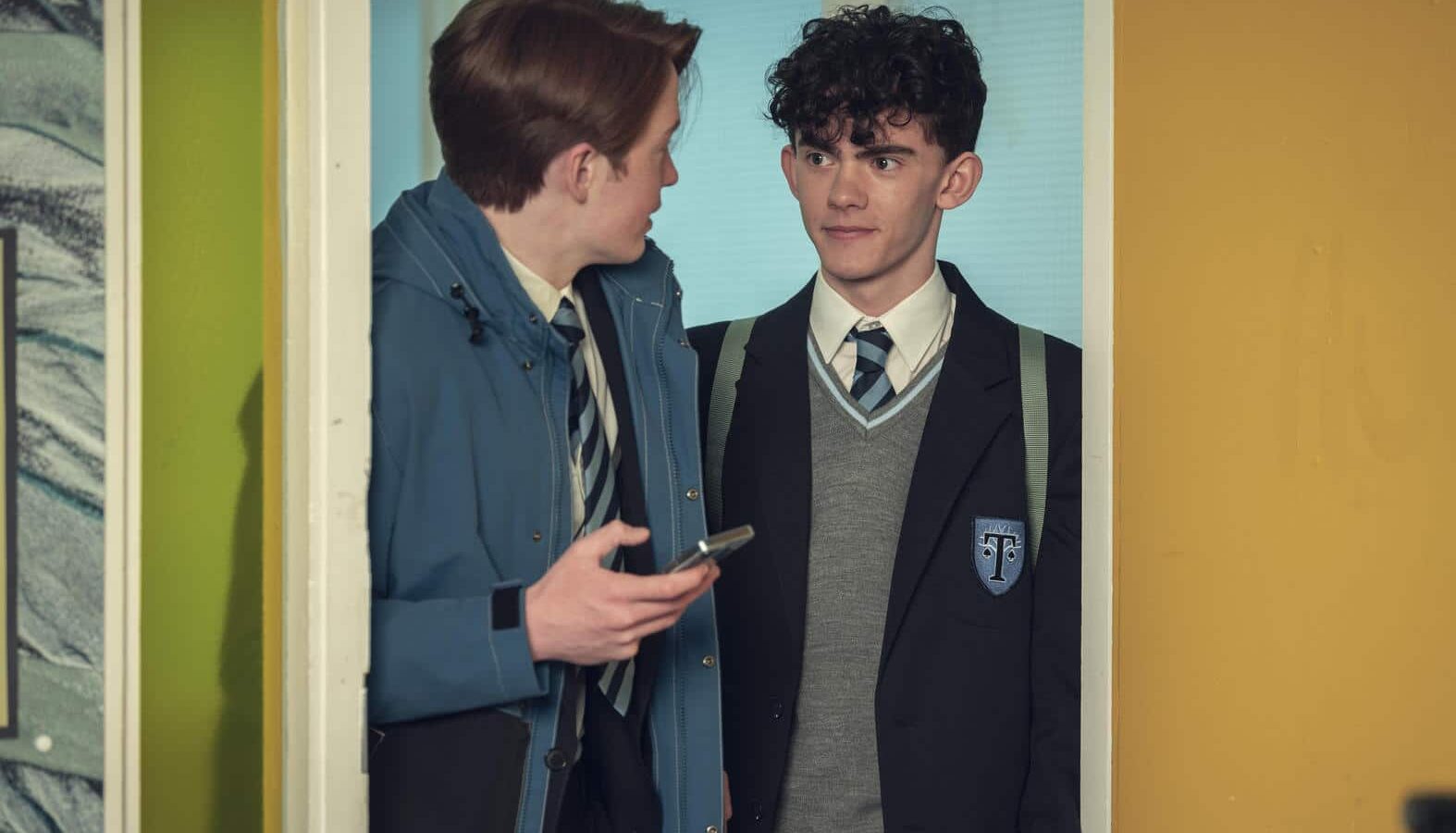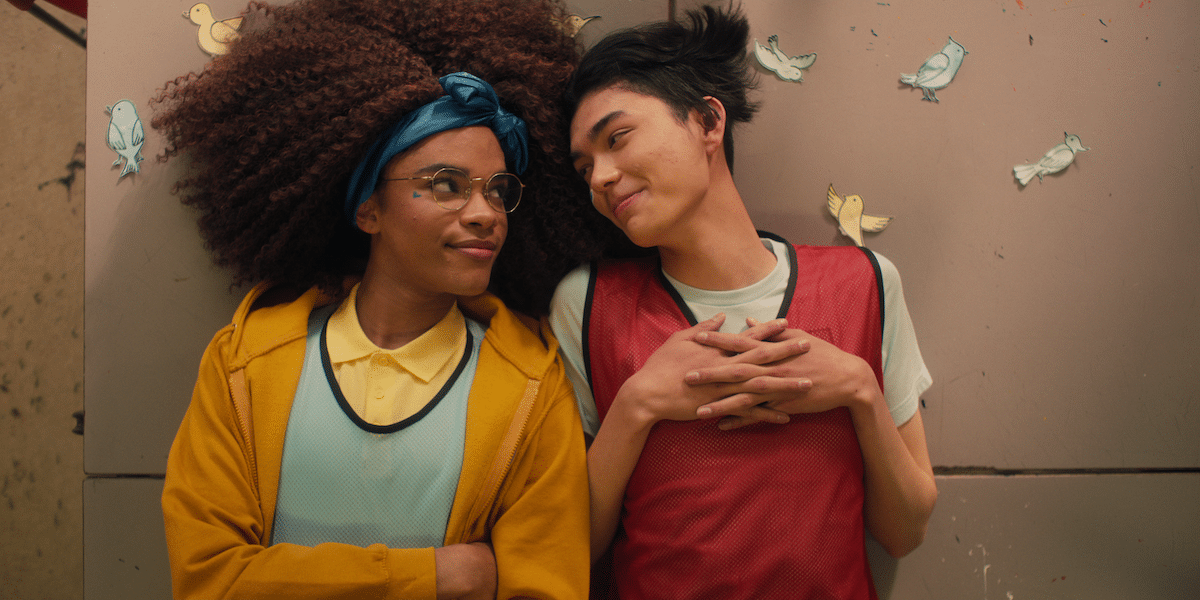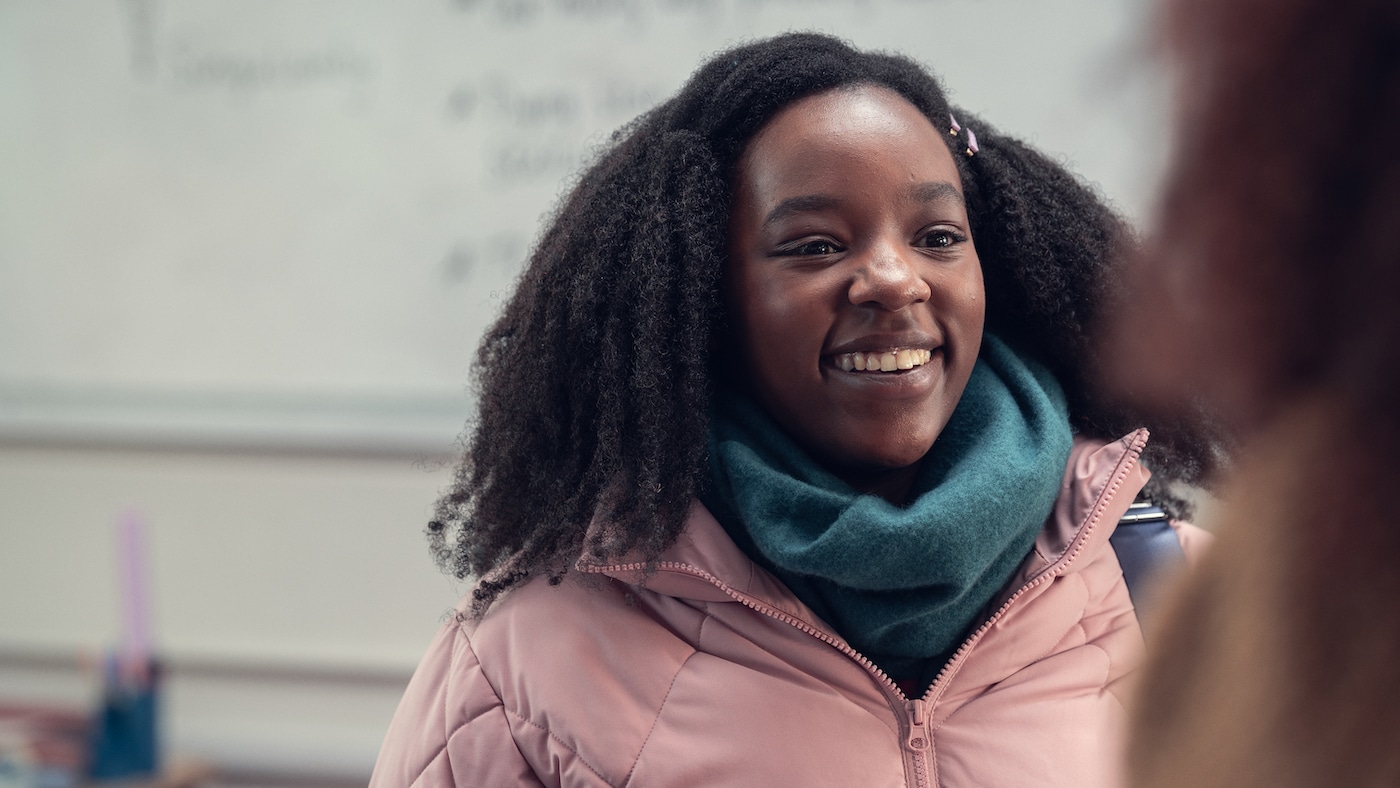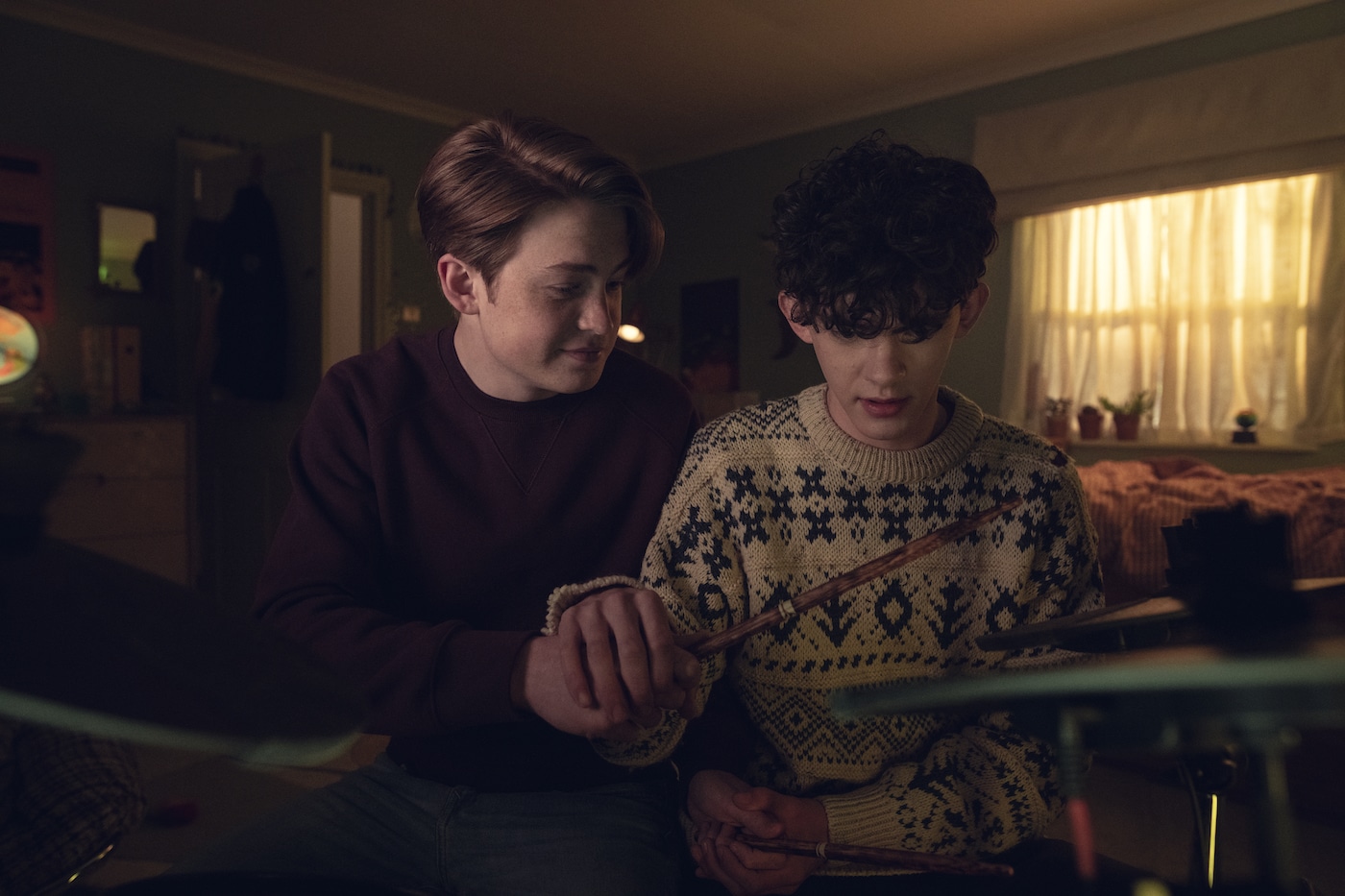Heartstopper creator wanted to show queer teens that the future is bright: ‘It spreads joy’

New love: Kit Connor and Joe Locke star as Nick Nelson and Charlie Spring in popular Netflix show Heartstopper. (Netflix)
Alice Oseman knew she had stumbled on something special when she started writing Heartstopper, the webcomic that would go on to spawn a Netflix series.
The world was first introduced to Charlie and Nick, the queer teens at the centre of the Heartstopper universe, back in 2016 when Alice started publishing her webcomic online. The boys and their eclectic group of friends have accrued an enormous fanbase, and in 2019, See-Saw Films optioned the rights to bring it to television.
After a long wait, Heartstopper has finally landed on Netflix. The series follows Charlie (Joe Locke) and Nick (Kit Connor) as they build a strong friendship that slowly starts to grow into something more.
For Alice, the goal from the start was clear: she wanted to show queer youth that they deserve romance, friendship and love – that they can have full, joyful lives.
“It’s all about these magic moments in relationships,” Alice tells PinkNews. “The title of the story is Heartstopper – it’s about moments that make your heart stop.”
Heartstopper is out now on @netflix worldwide. This story is the light of my life. I hope it brings you joy 🍂 pic.twitter.com/oSZYxZOB9M
— Alice Oseman Updates (@AliceOseman) April 22, 2022
PinkNews caught up with Alice Oseman to talk about the origins of her acclaimed webcomic, the strenuous casting process, and why queer people need to see more joy on their television screens.
PinkNews: How did the webcomic come to be, and where did these characters come from?
Nick and Charlie were characters in the very first young adult novel I wrote, Solitaire. I wrote that when I was at school and it was published in 2014. That book is about Charlie’s older sister Tori, so Nick and Charlie are kind of supporting characters. But I fell in love with them as I was writing that story and I knew they had a bigger story than what we see in Solitaire, so I wanted to tell their story somehow.
For a really long time I tried to plan out their story as a novel, because that’s what I knew how to do, but I just couldn’t get it to work, and I eventually realised that Nick and Charlie’s story was more episodic so it suited a serialised format like a webcomic so much better. So then I started creating the webcomic in 2016.

Nick and Charlie (Kit Connor and Joe Locke) in Heartstopper. (Netflix)
There’s so much electricity and chemistry in this story – did you feel that from the start?
I think I did, and that’s so much of the reason why I was so excited to tell this story and why I was so passionate about it. When I started creating Heartstopper, it was literally just a passion project. I wasn’t making any money off of it, I was just doing something in my spare time because it brought me so much joy. I did know even then that Nick and Charlie’s story was really special.
How did it come to be a television show and what was your feeling when you were first approached about adapting it?
Heartstopper was optioned for TV in 2019 by See-Saw Films and that was the year the first volume was traditionally published by Hachette. Even at that point Heartstopper wasn’t that huge – only the first book had come out and I was really surprised we were getting interest for film and TV. Obviously I was super excited about it and I felt really strongly that the story would work as a TV show. I really liked See-Saw when I met with them because they were so keen to work with me and for me to be really involved in the process, and that’s something that I’ve always known would be really important to me – that I wouldn’t let someone just take my story and do whatever they want with it, I would want to be involved. Netflix, when they came on board as well, were really happy for me to be involved.
The casting process was arduous, with more than 10,000 people putting themselves forward. What was that like?
It was really exciting but so intense and very nerve-wracking. We had a specific idea of who these characters are, and they’ve got visual references because it’s a comic, so we know what they look like. We knew how important it was to find people who look like the drawings, but we also wanted to cast authentically – we wanted to find teens who were actually around the age of the characters and obviously we needed to find talented actors as well. That was one of the main reasons we made it open casting, because we needed to search high and low for these people, and we knew that if we didn’t find them, the show possibly wouldn’t work at all. So it was a really stressful, scary process, and the stakes were very high, but somehow they found their way to us and now we have a perfect cast. I’m really lucky.
There’s so much chemistry between all the cast members – what was the process like behind the scenes to build that connection?
I think a really big part of that was the rehearsal period. We had two weeks before the shoot started which was all rehearsals, and we had the lead cast meet up every day. We spent a lot of time just talking about the characters, we did some improvisation activities, and we read through the scripts. That was everyone’s opportunity to get to know the characters and understand the story better, but it was also everyone’s chance to get to know each other and to meet the people who they’re going to be spending the next 10 weeks with. I think that was really important. It created a really nice atmosphere where everyone knew each other and everyone was supporting each other.

Yasmin Finney and William Gao in Heartstopper. (Netflix)
Yasmin Finney, who plays Elle, is such an amazing actor – did you know you had struck gold when you found her?
We knew it was going to be really hard to find someone to play Elle. We were really worried that we wouldn’t find that person, but from Yasmin’s first video, she was just incredible. You immediately felt so much emotion for her and her performance. She was amazing and there was never any doubt in my mind that she wouldn’t be able to do it. We were very lucky to find her.
Elle’s story is a trans story that’s not about coming out, it’s about the aftermath of that – it touches on the hardships and challenges, but it’s also a really positive, joyful story. Was that important to you?
Yeah, definitely. I think all kinds of stories are important, all kinds of trans stories are brilliant, and every single trans story that comes out is great – we need more. But for me, in Heartstopper, I love to focus on the joy and celebrating people’s journeys, and I think Elle has reached a point in her journey where she knows who she is and she’s found so much self-acceptance, and she’s really fought to be in that place. It’s just nice to be able to celebrate that and show viewers a trans person who is thriving and who has come so far, and is now just able to focus on making friends and having a crush on one of her friends. I think that’s a lovely story to tell.

Corinna Brown in Heartstopper. (Netflix)
It’s so powerful to see a television show focused on LGBT+ young people who are thriving – a show like this couldn’t have been made a decade ago. Why is it so important we have shows like this on television?
Well it’s important for people to be able to see themselves on TV, to see their experiences reflected back to them. The more queer stories there are, the more variety of queer stories there are, and the more people will see themselves. It will help people accept themselves and understand each other better. It just makes the world a better place, I think.
Heartstopper also uses animation throughout to elevate those more emotional moments – where did that idea come from?
The idea originated from the comics itself. In the comics, in moments of particularly high emotion, I would draw little embellishments on the page like leaves or flower petals, and we kind of took that and did so much more with that idea. We came up with the concept quite early in the script-writing stage of these “heartstopper moments” – at moments in the story of high emotion we would add in some kind of animated element as a way of exploring the emotion the characters are feeling. It fits the tone of the story so well.

Kit Connor and Joe Locke in Heartstopper. (Netflix)
It’s also notable that Heartstopper is quite different from a lot of teen-oriented shows out there right now, such as Euphoria – it can be watched by anybody of any age. Was that intentional?
Absolutely, that was one of our big aims for the show, was to have a queer story with mostly queer characters that could be watched by young teens and tweens. There’s really not a lot out there for that age group. But at the same time I think the story can be enjoyed by anyone – I think adults will love this story, I think older teens will love this story. But I’m really happy it can be watched by younger viewers, I think that’s really important.
Television really has the power to change people’s lives – what do you hope the impact of Heartstopper is on young LGBT+ audiences is?
My main hope for the show is that it spreads joy and that it makes people feel hopeful and happy. Especially for young queer teens, I want it to help them believe that they will be able to find romance and friendship and happiness – even if they’re going through something that’s not great, there is so much goodness to be found in the world. Heartstopper is a celebration of all the joy and hope and love that there is in the queer experience.
Heartstopper is out on Netflix now.

